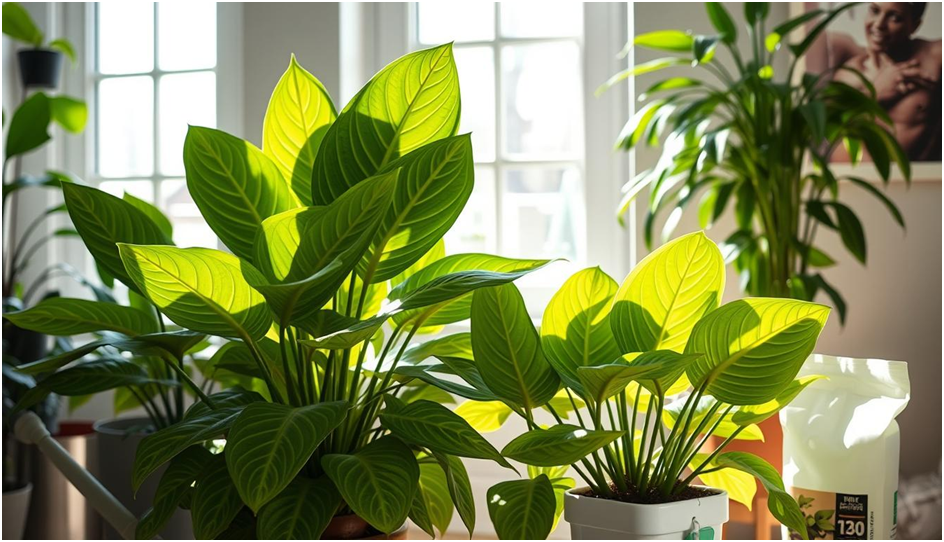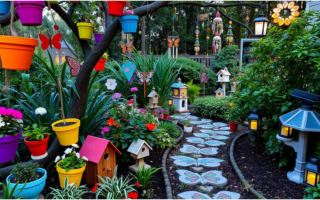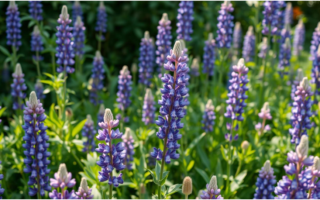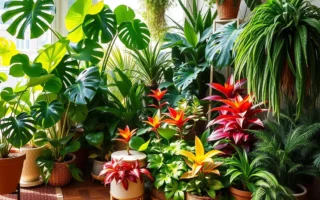Table of Contents
Starting to care for your dieffenbachia plant is exciting. It adds beauty and is easy to look after. Many people love it, calling it dumb cane. This guide will help you care for it, from the basics to fixing common problems.
Thank you for reading this post, don't forget to subscribe!By following this guide, you’ll learn to care for your dieffenbachia. It’s great for both new and experienced plant lovers. You’ll know how to keep your dumb cane happy and healthy.
Key Takeaways
- Understanding the basic needs of your dieffenbachia plant is crucial for its survival
- Dieffenbachia plant care involves providing the right amount of light, water, and humidity
- Regular fertilization and pruning are essential for promoting healthy growth
- Being aware of common pests and diseases can help you take preventative measures
- With proper care, your dieffenbachia plant can become a beautiful and thriving addition to your home
Understanding Your Dieffenbachia Plant
To care for your dieffenbachia plant well, knowing its background and traits is key. This knowledge helps you create the right environment for it to flourish. By following a care guide, you’ll become an expert in caring for dieffenbachia plants.
Dieffenbachia plants come from the tropical areas of Central and South America. They are known for their stunning, variegated leaves and can grow quite tall. Understanding their natural habitat is crucial for their care. They thrive in bright, humid places with moderate temperatures.
Origins and Natural Habitat
Dieffenbachia plants are from the tropical forests of Central and South America. They need high humidity, moderate temperatures, and filtered light to do well. By mimicking these conditions at home, you can create the perfect environment for your plant.
Common Varieties
There are many varieties of dieffenbachia plants, each with its own look. Popular ones include Dieffenbachia maculata, Dieffenbachia amoena, and Dieffenbachia compacta. Knowing your plant’s specific needs helps you care for it better.
Growth Patterns and Characteristics
Dieffenbachia plants are known for their beautiful, variegated leaves and can grow quite tall. They have a compact, upright growth habit and can reach heights of up to 6 feet. With the right care, your plant will grow healthily and look stunning.
With proper care, your dieffenbachia plant can thrive and add beauty to your home. By following these care tips and understanding your plant’s needs, you’ll become a dieffenbachia expert.
| Dieffenbachia Variety | Characteristics |
| Dieffenbachia maculata | Variegated leaves, compact growth habit |
| Dieffenbachia amoena | Large, green leaves, upright growth habit |
| Dieffenbachia compacta | Small, compact leaves, slow-growing |
Why Dieffenbachia Is Called Dumb Cane
Learning how to care for a dieffenbachia plant means knowing its nickname, “dumb cane.” This name comes from the plant’s toxic nature. If eaten, it can make you temporarily lose your voice. The toxins in dieffenbachia can irritate your mouth, throat, and stomach, making it hard to speak.
To care for your dieffenbachia plant safely, take these steps:
- Keep the plant away from kids and pets to stop them from eating it.
- Use gloves when you prune or touch the plant to avoid the toxic sap.
- Wash your hands well after touching the plant to avoid getting the toxins in your mouth or eyes.
By following these tips, you can enjoy your dieffenbachia plant’s beauty while staying safe. Always put your safety and the safety of others first when caring for your plant.
| Precaution | Importance |
| Keep out of reach of children and pets | High |
| Wear gloves when handling the plant | Medium |
| Wash hands after handling the plant | High |
By following these guidelines and understanding the “dumb cane” nickname, you can create a safe and healthy space for you and your dieffenbachia plant.
Essential Dieffenbachia Plant Care Requirements
To keep your dieffenbachia plant thriving, it’s crucial to understand and meet its basic needs. Dieffenbachia care instructions emphasize the importance of providing the right environment. This includes light, water, humidity, and temperature.
Many people overlook the significance of balancing these elements. However, finding the right balance is key to ensuring your plant’s health and happiness. By following a few simple guidelines, you can create an optimal environment for your dieffenbachia plant to flourish.
Light Requirements
Dieffenbachia plants prefer bright, indirect light. Placing your plant near a window with a sheer curtain can help filter the light and prevent scorching.
Water Needs
Water your dieffenbachia plant when the top inch of soil feels dry to the touch. Avoid overwatering, as this can lead to root rot and other problems.
Humidity Levels
Maintain a humid environment by placing the plant on a tray filled with water and pebbles. This will help keep the surrounding air moist without overwatering the plant.
Temperature Range
Keep your dieffenbachia plant in an area with a consistent temperature between 65-75°F (18-24°C). Avoid placing your plant near heating or cooling vents, fireplaces, or drafty windows.
By following these dieffenbachia care instructions and finding the right balance for your plant, you can enjoy the many benefits of having a thriving dieffenbachia plant in your home.
Soil and Potting Requirements
For best practices for dieffenbachia care, the right soil and pot are crucial. Your plant needs a potting mix that drains well but holds moisture. Look for a mix with peat moss, perlite, and vermiculite for the best drainage and aeration.
Here are some key considerations for soil and potting requirements:
- Choose a pot that is only slightly larger than the plant’s root ball to prevent the soil from becoming too wet.
- Select a potting mix that is specifically designed for tropical plants like dieffenbachia.
- Avoid using regular garden soil, as it can compact and prevent proper drainage.
Repotting your dieffenbachia every 1-2 years can also help maintain its health and promote new growth. When repotting, gently remove the plant from its pot, taking care not to damage the roots. Then, trim any dead or damaged roots and replant the dieffenbachia in a fresh potting mix. By following these best practices for dieffenbachia care, you can help your plant thrive and enjoy its beautiful, lush foliage.
By understanding the importance of soil and potting requirements, you can take the first step towards creating a nurturing environment for your dieffenbachia. Remember to monitor your plant’s condition and adjust its care accordingly to ensure it receives the best possible care.
| Soil Requirement | Recommendation |
| Drainage | Well-draining potting mix |
| pH Level | Slightly acidic to neutral (pH 6.0-7.0) |
| Moisture | Consistent moisture, but not waterlogged |
Feeding and Fertilization Schedule
Understanding the role of fertilization in dieffenbachia care is key. These plants need a balanced diet to grow well. Fertilization is crucial for providing the necessary nutrients.
There are many fertilizers to choose from for your dieffenbachia. You can pick from water-soluble, slow-release, or organic options. The best choice depends on your plant’s needs and your preferences.
Follow a seasonal feeding schedule for your dieffenbachia. Feed it a balanced fertilizer once a month during the growing season. This is usually spring and summer. In fall and winter, when it’s dormant, fertilize every two months.
Watch out for signs of over-fertilization. These include yellow or burnt leaves, stunted growth, and root damage. By following these tips, your plant will thrive and look great.
| Fertilizer Type | Benefits |
| Water-soluble fertilizers | Easy to apply, provides quick results |
| Slow-release fertilizers | Provides long-term nutrition, reduces waste |
| Organic fertilizers | Environmentally friendly, promotes healthy soil |
Pruning and Maintenance Techniques
Pruning is key to keeping your dieffenbachia plant healthy and looking good. Start by removing dead or damaged leaves. This stops disease and encourages new growth. It also helps control the plant’s height and makes it fuller.
Choosing the right tools is important when pruning. Use clean, sharp scissors or pruning shears to cut off dead leaves. Always cut just above a node, where a leaf meets the stem. This helps the plant heal fast and lowers infection risk.
Here are some tips for pruning your dieffenbachia plant:
- Remove any dead or damaged leaves to prevent the spread of disease
- Cut just above a node to promote new growth and reduce the risk of infection
- Use clean and sharp tools to avoid damaging the plant
- Prune your plant regularly to maintain its shape and promote healthy growth
By following these tips, you can keep your dieffenbachia plant healthy and thriving. Always handle your plant with care. Avoid touching the sap, as it can irritate your skin. With proper pruning and care, you can enjoy your dieffenbachia plant for many years.
Regular pruning and maintenance are vital for your dieffenbachia plant’s health and look. By following these simple tips, you can keep your plant looking great. Enjoy its beautiful foliage for years to come.
Common Pests and Diseases
As you care for your dumb cane, watch out for pests and diseases. Regular checks can spot problems early. This helps treat them quickly and prevent more harm.
Common issues include spider mites, mealybugs, and root rot. Look for white, cottony patches or soft, mushy roots to spot these problems.
Identifying Plant Problems
Regularly check your dieffenbachia for any unusual signs. Look for discoloration, droopy leaves, or pests.
Treatment Methods
Here are ways to treat pests and diseases:
- Isolate the affected plant to stop disease spread
- Prune infected areas to prevent more damage
- Use insecticidal soap or neem oil for pests
- Adjust dumb cane care to avoid root rot
Prevention Strategies
To keep your plant healthy, follow these tips:
- Water carefully to avoid root rot
- Ensure good air flow to prevent fungal growth
- Regularly check for pests or disease
By using these strategies and staying alert to pests and diseases, your dieffenbachia will stay healthy. Proper dumb cane care is key.
| Pest/Disease | Signs | Treatment |
| Spider Mites | White, cottony patches on leaves | Insecticidal soap or neem oil |
| Mealybugs | White, cottony patches on stems | Insecticidal soap or neem oil |
| Root Rot | Soft, mushy texture on roots | Adjust watering and fertilization practices |
Propagation Methods for Dieffenbachia
Exploring dieffenbachia care might lead you to want more plants or to share them with others. A good dieffenbachia care guide should talk about how to grow more plants. You can grow dieffenbachia by stem cuttings, division, or air-layering. Each method has its own tips and things to watch out for.
For stem cuttings, pick healthy stems with two nodes. Make sure to cut just above a node for better rooting chances. Division means separating the roots of a big plant, ensuring each part has enough roots and leaves. Air-layering is about getting roots to grow on a stem while it’s still on the plant, then potting it.
To boost your chances of success, keep the soil moist but not too wet. Also, give them bright, indirect light. With these tips, you’ll grow your dieffenbachia collection and enjoy their beauty for years. This is all while following a detailed dieffenbachia care guide.
Some important things to remember when growing dieffenbachia include:
- Use a potting mix that drains well to avoid soggy soil
- Keep the air humid to help roots grow
- Stay away from direct sunlight to prevent leaf burn
By sticking to these tips and your dieffenbachia care guide, you’ll grow your plants successfully. You’ll then get to enjoy their beauty for many years.
Safety Precautions When Handling Your Plant
When you take care of your dieffenbachia plant, remember the risks. These plants have toxic compounds that can harm humans and animals. Follow these tips for dieffenbachia care to stay safe.
Always wear gloves when handling your dieffenbachia plant. This prevents the toxic compounds from touching your skin. If sap does get on your skin, wash it off with soap and water right away. If you eat any part of the plant, get medical help fast.
Toxic Properties
The toxic compounds in dieffenbachia plants can cause problems. Symptoms range from mild to severe. They can include mouth and stomach irritation, nausea, and vomiting. In serious cases, it can even cause breathing problems.
Pet and Child Safety
Keep your dieffenbachia plant away from pets and kids. They might try to eat the leaves or stems. If you think your pet or child ate some, get medical help fast. By following these tips for dieffenbachia care, you can avoid accidents and keep everyone safe.
First Aid Measures
Know what to do in an emergency. If someone eats part of the plant, call the poison control center or get medical help right away. Being aware of the risks and taking precautions lets you enjoy your plant safely.
Seasonal Care Adjustments
Learning to care for your dieffenbachia plant means knowing how to adjust with the seasons. Your plant needs different care to grow well all year. In spring and summer, it needs more water and food to grow fast.
In fall, water and feed it less as it grows slower. Prune it to keep it looking good and healthy. When winter comes, protect it from cold and water it only once a month.
Here are some tips for seasonal care:
- Watch the temperature and adjust your care
- Change your watering based on humidity and temperature
- Fertilize in the growing season for best results
By following these tips, your dieffenbachia plant will stay healthy and vibrant all year. Always watch how your plant reacts to the seasons and adjust your care as needed.
Troubleshooting Growth Issues
Following dieffenbachia care instructions can sometimes lead to growth issues. It’s important to quickly identify and fix these problems to avoid harming your plant. Start by examining the leaves, stems, and roots for any signs of trouble.
Common issues include yellowing leaves, weak stems, and roots that have outgrown their pot. To solve these, you might need to tweak your care routine. This could mean adjusting the light, water, or fertilizer your plant gets. Regularly checking on your plant helps catch problems early.
Leaf Problems
Leaf issues often stem from too much or too little water, or from extreme temperatures. Try fixing these by adjusting your watering or moving the plant to a better spot.
Stem Issues
Weak or leggy stems can be due to not enough light or nutrients. To fix this, give your plant more light or fertilize it regularly, as the care instructions suggest.
Root Concerns
Root problems, like being root bound, can come from a small pot or old soil. Fixing this involves repotting in a bigger pot with fresh soil, following the care instructions closely.
By following these tips and adjusting your care routine as needed, your dieffenbachia can thrive. Always keep an eye on your plant and make changes to keep it healthy and happy.
| Common Issue | Cause | Solution |
| Yellowing leaves | Overwatering or underwatering | Adjust watering schedule |
| Weak stems | Lack of light or nutrients | Provide more light or fertilize regularly |
| Root bound conditions | Pot too small or old soil | Repot in a larger pot with fresh soil |
Master Tips for Thriving Dieffenbachia Plants
To keep your dieffenbachia plant happy, follow these best practices for dieffenbachia care. First, make sure it gets bright, indirect light. This is key for its health.
Next, water your dieffenbachia regularly. The soil should be moist but not too wet. Also, keep the humidity right by misting the leaves or using a pebble tray.
Feed your dieffenbachia with a balanced fertilizer during the growing season. Prune any damaged leaves to help it grow strong. Watch out for pests and diseases and treat them quickly.
By following these dieffenbachia care tips, your plant will stay vibrant and beautiful for many years.
FAQ
What are the common symptoms of dumb cane poisoning?
Eating or touching the dieffenbachia plant can cause temporary speech loss. It also leads to a burning feeling and swelling in the mouth, tongue, and throat. This is because of the plant’s toxic compounds, earning it the nickname “dumb cane.”
How much sunlight does a dieffenbachia plant need?
Dieffenbachia plants love bright, indirect light. They can handle some direct sun but too much can burn the leaves. Give your plant 6-8 hours of bright, filtered light each day.
How often should I water my dieffenbachia?
Water your dieffenbachia when the top inch of soil feels dry. Don’t let the soil get too dry, as it can cause yellowing and droopy leaves. Water once a week during the growing season and less in winter.
What type of soil is best for a dieffenbachia plant?
Dieffenbachia plants do well in a mix that drains well and is rich in nutrients. Look for a soil blend with peat moss, perlite, and compost for the best moisture and aeration.
How often should I fertilize my dieffenbachia?
Feed your dieffenbachia with a balanced fertilizer every 2-3 months when it’s growing. Don’t overdo it, as too much can harm the leaves. Stop fertilizing in winter when the plant is dormant.
How do I propagate a dieffenbachia plant?
You can propagate dieffenbachia plants through stem cuttings or division. For cuttings, take a 4-6 inch stem section just below a leaf node. Let it callus over, then plant it in moist, well-draining soil. Or, divide the plant at the root ball when repotting.
What are some common pests that affect dieffenbachia plants?
Dieffenbachia plants can get spider mites, mealybugs, and aphids. Watch for webbing, white cottony masses, or sticky leaves. Treat promptly with insecticidal soap or neem oil.
How can I prevent my dieffenbachia from getting root rot?
To avoid root rot, use a well-draining potting mix and a pot with good drainage. Don’t overwater and let the soil dry a bit between waterings. Check the roots for decay and repot if needed.













